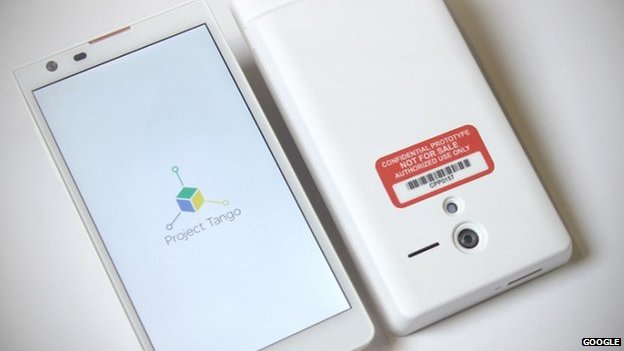If you weren’t already convinced that smart phones are digital pocketknives, then perhaps you’ll change your mind now that Google has just unveiled an Android-based prototype with built-in 3D scanning capabilities. Project Tango as it is dubbed, infuses an advanced scanner capable of making 250,000 measurements a second while simultaneously updating its position in real-time ― the phone doesn’t just scan but digital recreates a visual map its surroundings.

Beginning on February 20th, Google is encouraging developers to sign up for a dev kit of the prototype. The initial batch is limited to a hand-picked selection of 200 developers who have demonstrated a clear goal of what they will build by March 14, 2014. The company specifies that priority will be given to projects centering “indoor navigation/mapping, games that use physical space, and new algorithms for processing sensor data.” Applications can be coded in Java, C, or C++, using the Unity Game Engine; API’s are still a work in progress.
“Project Tango strives to give mobile devices a human-like understanding of space and motion through advanced sensor fusion and computer vision, enabling new and enhanced types of user experiences – including 3D scanning, indoor navigation and immersive gaming,” said Johnny Lee, Google’s Advanced Technology and Projects (ATAP) program lead helming the project.
To a large extend, Google’s motivation behind the Project Tango was to crowd-source ideas directly from developers and see what kind of innovative takes they’ll have on fusing 3D sensing and vision technology with an omnipresent consumer device. The application potential for a device in one’s pocket with an almost human understanding of space is drastic, revolutionizing the way we interact with technology.
Vast uses from your pocket alone
Consider the following scenario: it’s time to purchase some new furniture, and you, being armed with an Android-phone capable of 3D imaging, scan the entire premise to obtain perfect measurements of the room with minimal effort. Now once you’re reached the furniture shop, you casually scan that couch your wife or husband’s been eyeballing and see how it fits into scanned image of room. BAM, perfect-fit! If that smooth and efficient way of furniture shopping hasn’t impressed your spouse then it’s time to find a new one.

Tango’s sensor
Until recent incarnation of vision processors became less power hungry, it was previously impossible to create a practical computer vision/smart phone hybrid; older computer vision processors drained too of the battery’s charge in too short of a time. However, Movidius’ contemporary Myriad 1 vision processor rectified the power issue while simultaneously lowering cost of entry, allowing Google to use to the platform for Project Tango.
Story via techcrunch and BBC
Advertisement
Learn more about Electronic Products Magazine





